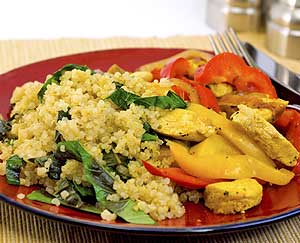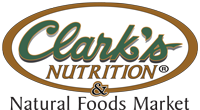Search Healthnotes

Related Topics
-
Delicious Gluten-Free Recipes
-
Gluten-Free Center
-
Gluten-Free Diet Overview
-
From "Gluten-Fear" to Gluten-Free
- By Judith H. Dern
Starting Your Gluten-Free Diet
What does following a gluten-free diet mean? That you're embarking on an easy diet with a wide range of health-promoting effects. Instead of dwelling on what you’re giving up, consider that you’re going to enjoy a whole new world of delicious food options to meet your special dietary needs. You’ll be eating seasonally, choosing more fresh fruits and vegetables, focusing on meats, seafood, poultry, legumes, lentils, corn, and rice, and discovering fascinating ancient grains such as quinoa, amaranth, and millet. You’ll be able to eat potatoes, eggs, most cheeses, even chocolate (!)—and enjoy them without guilt because you’ll be taking good care of your body. In fact, you’ll probably end up eating—and feeling—better than ever!
You’re going to enjoy a whole new world of delicious food options...
What foods are really gluten-free?
Following a gluten-free diet requires educating yourself about which foods you can eat and which are off limits. It’s now widely known that wheat-free and gluten-free are not the same thing, but there are other details of label-reading that are important to learn as well. The good news: along with the FDA’s new standards for gluten-free products and voluntary product labeling by manufacturers, every month more great-tasting gluten-free products are showing up on store shelves. Follow these steps to get started shopping:
- Always read labels—and read them again every time you shop. Manufacturers can switch ingredients without notice. Some products such as nondairy creamers, soups, meat sauces, and salad dressings that you’d never guess contain wheat or added gluten actually do.
- Shop the perimeters of the store to find whatever is fresh and seasonal.
- Check out Asian, Indian, and Mexican foods in the ethnic section. Read labels, and don’t forget the frozen aisles for "grab and go" products such as burritos and enchiladas made with corn tortillas.
- Try new things you haven’t tasted before. New gluten-free products are being introduced all the time, including cookies, crackers, baking mixes, and hot cereals.
- Ask to talk to someone in the grocery area for help locating gluten-free products. Ask for more products if you don’t find enough choices. Grocery buyers do their best to respond to customers’ needs.
- Develop a personal “safe food list” and take it with you to the store (make sure to date it so you know it’s current)—and check labels again. Read more about the Gluten-Free Diet to help build your list.
- Check for product updates and safe food lists on reputable sites such as Gluten Intolerance Group (www.gluten.net) and Celiac Disease Foundation (www.celiac.org).
- Avoid processed foods since they most often contain wheat and wheat-based starches.
- Review manufacturers’ Web sites or call their 800 numbers for gluten-free product information.
- Look for helpful grocery store brochures and information guides about gluten-free products.
- When in doubt, go without.
What about eating out?
Dining at restaurants on a gluten-free diet is surprisingly straightforward. Servers at sit-down restaurants are usually happy to consult with guests about special diets, and they’ll talk to the chef for you. Ask what you can have, instead of what you can’t. It’s always a plus if you can call ahead to find out what the restaurant offers. Alert your friends ahead of time when you’re invited to dine at someone’s home.
- Green salads (minus the croutons!) with a vinaigrette dressing are always a safe option when dining out.
- Ask to have the breadbasket removed, or don’t even have it delivered to the table.
- Ethnic restaurants—Mexican, Japanese, Chinese, and Vietnamese—offer many gluten-free dishes. Choose a dish with rice noodles instead of wheat.










